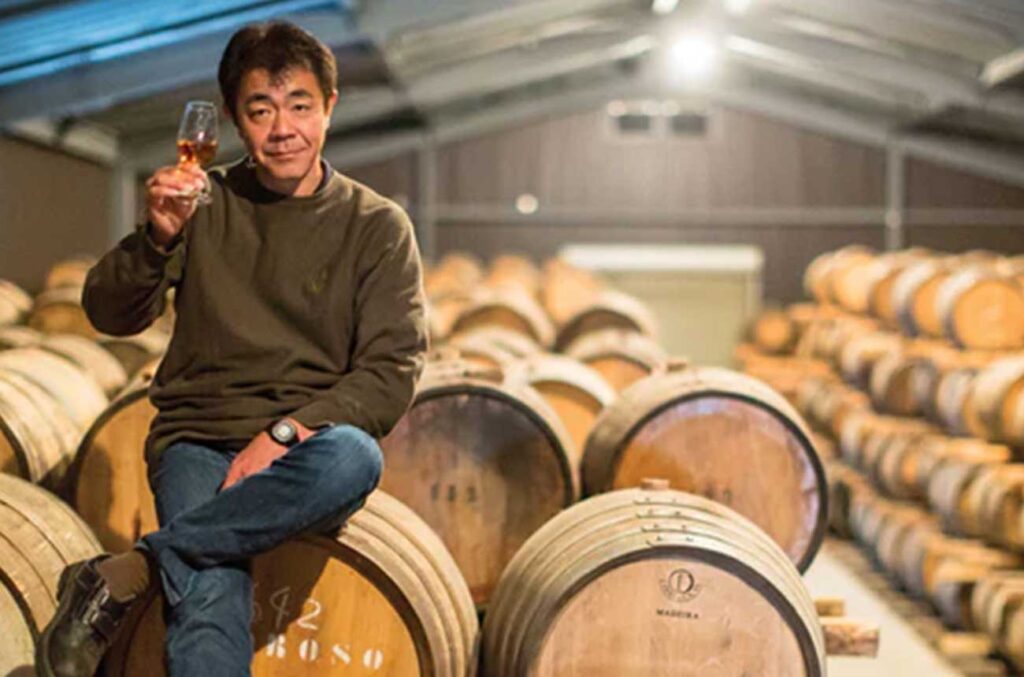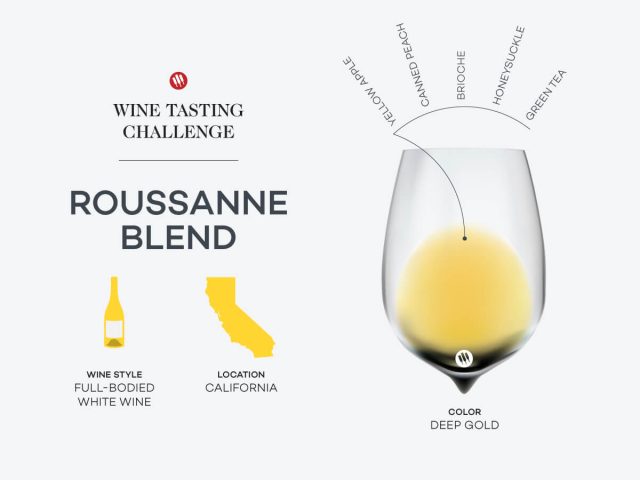Mizunara oak explained – Decanter

Picture Sandy Hyslop, a jovial chap in comfortable middle age, bent over to thrust his nose into an empty wooden cask. He has travelled 32km just to sniff out any sour or musty notes – and thankfully found none to worry him.
Instead it smells soft and sweet like a joiner’s workshop, with just a whiff of smoke from the char inside. Hyslop is director of blending and inventory for Chivas Brothers, so you’ll find him sniffing away like this quite regularly.
‘We have to nose every empty cask before any whiskies even go near it to make sure it’s what we’re looking for,’ he says. ‘Touch wood we haven’t had any issues, but we still assess every cask that comes in from Japan.’
So would you if you knew what each one cost.
What is mizunara?
A mizunara oak tree, Quercus crispula
Mizunara is also known as Japanese oak (Quercus crispula) and is native to Hokkaid?, Japan’s northernmost prefecture. It is one of the rarest and most expensive oaks in the world, and is often associated with luxury spirits. Just its name on a label can give prices a boost.
Japanese whisky distillers began making casks out of mizunara soon after World War II. At this time the country faced many shortages, including the imported casks distillers had previously relied upon.
At the same time, demand for whisky was soaring thanks to the western troops stationed there. Distillers had little choice but to start using the local oak, despite its reputation for being hard to work with.
Why is mizunara so difficult to work?
A mizunara tree can grow for 200 years before it is large enough to make into casks. Once felled, each tree will yield less timber than other species of oak; you’d get twice as much from a typical American oak for example.
In addition Japanese oaks grow crooked and their knotty wood has a high water content: mizu-nara translates to ‘water oak’. This means mizunara staves must dry for longer – at least three years. After this time they are less pliable than staves made of other oaks, and so are harder to shape.

Mizunara oak barrels at Chichibu Distillery
Mizunara wood is also markedly porous, so casks made from it are apt to leak, losing more spirit each year on top of the expected loss to evaporation (the so-called angel’s share). On the plus side, this porous nature means the whisky can soak deeper into the wood and pick up more flavours.
If mizunara demands extra skill and care to turn into casks, Japan’s coopers are evidently up to the task. ‘The casks are an absolute joy to work with,’ explains Hyslop. ‘There’s lots of talk about how difficult it is to get the wood and to make the casks but I don’t see those problems. All I see are the casks that come in that are absolutely fabulous quality. We fill them and get great results.’
Why is mizunara so expensive?
There are strict laws in Japan that limit how much mizunara may be logged each year. Trees grown in Japan’s national forests may not be cut down and must fall naturally – but it is possible to buy trees grown in privately owned forests.
The timber is then sold in blind auctions held between December and March. These are fiercely contested, as supply is tight and demand is high. Mizunara is also highly prized by Japanese carpenters who use its wood to craft luxury furniture. It is in such short supply that only around 200 mizunara casks are made each year. Altogether mizunara casks account for only about one in 10 of the whisky casks maturing in Japan.
This makes mizunara casks dozens of times more expensive than those made of plentiful American oak. They’re even more valuable than a first-fill oloroso Sherry butt made of Spanish oak. ‘It’s many thousands of pounds for each mizunara cask that we bring in,’ says Hyslop (below).

Sandy Hyslop, director of blending and inventory for Chivas Brothers
Chivas has a longstanding relationship with a cooperage in Japan. For Hyslop this represents a significant commitment in his annual cask budget, worth many hundreds of thousands of pounds.
Such long-term arrangements are essential because mizunara casks are so hard to come by; Hyslop says they are ‘infinitely more hard to get’ than a sherry cask. ‘If our Sherry cask supplier had a terrible incident, we could probably get them from someone else and it would be a bit disruptive for a little while. But mizunara’s a completely different ballgame.’
Why are mizunara casks so sought after?
In a word: flavour. Mizunara casks get spirits producers’ nostrils twitching. Mizunara has the lowest tannin of any oak species used to make casks. It is also much richer in the vanilla-flavoured compound so prized in wood-aged spirits. Beyond this, mizunara imparts complex and distinctive aromas of sandalwood, tonka bean and kyara incense.
‘I remember lab trials years ago that produced very specific flavour profiles such as heavy almond nuts and marzipan,’ says Dr Nick Savage (below), Bladnoch’s Master Distiller. Savage had experimented with mizunara in previous roles, including at The Macallan.

Dr Nick Savage, Master Distiller at Bladnoch
Now at Bladnoch, he is buying up mizunara casks in which to mature whisky. ‘It’s the oak species and region of growth that drive the majority of the flavours, with the impact of seasoning amplifying or rounding these, along with the levels of toasting generated in the cooperage,’ he explains.
Which spirits can be aged in mizunara?
Chivas may have been the first to mature a blended Scotch in mizunara, but it’s far from the only distiller making use of this wood. Perhaps the two biggest names linked to mizunara are Japanese distilleries Yamazaki and Chichibu. The latter even ferments its whisky in washbacks made of mizunara.

Washbacks made of mizunara oak at Chichibu Distillery in Japan
Single malt Scotch and Irish whiskies from Bowmore and Glendalough, respectively, have been aged in mizunara. So too has a Canadian whisky from Mercer + Prince and a bourbon from Angel’s Envy.
Nor is whisky the only spirit to see the inside of these casks. Courvoisier has released two Cognacs aged in mizunara casks secured from Suntory, which owns Yamazaki. Plus there has been a mizunara finished rum from Minoki and gins from Monkey 47 and the Kyoto Distillery’s limited edition Ki Noh Bi range. (A word to the wise: at the time of writing the distillery had gin maturing in at least two more mizunara casks.)
Are spirits aged in mizunara worth the extra money?
Dawn Davies MW, buying director at Speciality Drinks, says mizunara can overpower a drink if not handled carefully. ‘It’s a powerful, spice-driven flavour which is probably not to everyone’s taste. The key is to get that balance right, and I think it is very hard – especially with liquids like Cognacs [that are] more gentle and fruit forward.’
Another difficulty is that the high prices commanded by mizunara-aged spirits in the past can encourage other distillers, seeking to cash in on the wood’s popularity, to take short-cuts. ‘I’m now more wary when something has “mizunara” written on it, if it’s not from someone who’s been using it for a long time and understands what it does to the liquid,’ explains Davies. ‘Often now mizunara has become a marketing tool as opposed to expressing a genuine desire to give a different perspective on the ageing.’
That being said, there are still good bottles out there. The key, according to Davies, is to read the reviews and to see what experts have said about it. ‘Have they given it a good score? Have you seen good write-ups on it? Because then at least you know that there’s a consensus that it’s good liquid.’ For those who can, attending tastings and shows offers a chance to try the spirit for yourself to decide whether you like it.
After all that, the final decision comes down to you, the drinker. There is no universal standard that defines whether one spirit is worth it, while another is not. These spirits will always be an indulgence, but hopefully one where you can say: ‘This is worth it for me, right now’.
Four mizunara aged spirits to try
Chichibu Ichiro’s Malt Mizunara Wood Reserve
Cereal aromas first, then woody and nutty – rather than spicy – with fruity top notes. Over time complexity builds: green apple, honied lemon, soft vanilla, black pepper, coconut, baking spices, fudge, incense, frangipane and candied tropical fruit. Silken and warming on the palate. Arouses an unexpected nostalgia for cups of Horlicks in darkest winter. Alcohol 46%
Chivas Regal Mizunara?
A gentle blend that is soft, warming and peachy. Redolent of a wooden blanket box with notes of cedar, coconut and vanilla over smooth and sweet caramel. Soft nut and incense notes bring extra depth. On the finish there is milk chocolate and sweet honeycomb toffee. Cadbury Crunchie fans take note. Alc 40%
Courvoisier Mizunara Cognac 2023 Blend
Brioche and crême pâtissière flavours dominate initially, then are eclipsed by building rancio with aromas of wet leaf and Luxardo cherries. Nutty and spicy mizunara notes blend into these other aromas rather than layering on top. One to savour neat with a close friend over a long and unhurried evening somewhere quiet. Alc 48%
The Matsui Mizunara Single Cask
Unfiltered and uncoloured. Gentle aromas of cereal, honeyed malt and creamy porridge, stone fruit, cherry, vanilla, apple sauce, sandalwood and incense. A rich texture, a little oily, with pale roasted hazelnut towards the finish. Best when diluted with just a splash of water to bring the alcohol into balance with the delicate flavours. Alc 48%




